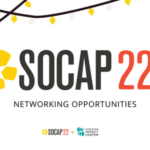*This post is the second in the SOCAP series by Steven Wright. (@Conches) Steve is the Director of Social Performance Management Center at the Grameen Foundation and a SOCAP11 Keynote. Learn more about Steve here.
Maximize Impact
Markets : Capitalism :: Physics : Ideology
Markets have natural laws, like physics. Capitalism is an ideology. Ideologies can be changed.
All social enterprises want to know if they are producing positive social outcomes. They closely monitor their financial performance to maintain sustainability and closely monitor their social performance to see if they are achieving their mission of doing good. This blog focuses on the questions “Am I any good?” and “What is the good I am producing?”
There is no quantifiable unit of good
I have always found it strange that social performance is predominantly perceived as a measurement problem. The reality is that great social enterprises don’t focus on measuring what matters; their priority ismanaging what matters. Measurement is an artifact of good management. To a large extent the obsession with measurement is a problem unique to socially-funded entities (by that I mean organizations with capital provided at a rate of return between -100% and about 6%.) Because the money is not earning as much as it might otherwise, it needs additional justification to be invested. An investor/funder wants to ensure that their money is well spent, that it earns a valuable return that includes both money and social impact. The social impact or non-monetary component of the return on the investment comes in the form of social metrics or measurement.
However, as Kevin Jones, Co-Founder SoCap Conference, said to me recently, “Understanding the specific impact of a specific dollar invested is a pipe dream.” Even if it were possible to track a specific dollar’s impact, the overhead to do it would be significant and would subtract from the resources needed to achieve the impact. With this as a given, how do we build a marketplace when a marketplace requires comparability to understand relative value?
For a for-profit entity this is easy. An investor gives an entrepreneur a dollar and sometime later gets $1.25 and rejoices at the 25% return on investment (ROI). The math is easy because the input and the output are the same thing: money. In a social enterprise, money is an input but it is not an output. Money is important because it dictates sustainability but profit is not the purpose of the enterprise; social impact is. A massive amount of work has gone in to replicating this math to calculate an SROI (social return on investment). The work ofREDF, Jed Emerson, Social Venture Technology Group and others have taught us a tremendous amount about what is possible. A primary lesson from this SROI work is that there is no monetary equivalent to a universalunit of good. Moreover, it is not rational to equate a specific social outcome to the amount of money that was spent to produce that outcome. We cannot use a financial balance sheet to compare the relative goodness of a homeless advocacy group in Brooklyn and a fair trade cooperative in Peru. The Beatles said it best: Money can’t buy you love.
So, if we give up on a universal measure of good as an analog to profit, then we need to find comparability in the actual outputs of the work. This is where IRIS (Impact Reporting & Investment Standards) comes into play. IRIS provides two things: 1) metadata, or definitions of outputs for social enterprises, and 2) hopefully, someday, the actual outputs from social enterprises that, when aggregated, will give us insight in to our progress toward solutions (more on this in my next blog). At the moment, it is the former that is the most important. The adoption of these definitions is what will give us comparability. What IRIS gives us is the opportunity to begin.
Some specific examples from IRIS:
By reporting standard outputs, we can build a market. As I mentioned in my last post, Return Value, I believe this represents a disruptive innovation. To date, the only proxy for success that has broad adoption is profit. If we can draw attention to progress toward social solutions through auditable, comparable reporting, then we can be rigorous about the specific value that is returned. Eventually we will be able to make connections betweenoutputs and outcomes (e.g., improvement in quality of life). That will be valuable.
Manage What Matters
A social marketplace with outputs that can be compared will never come about if we do not create the incentives to generate those outputs. Currently, much of the social measurement that is generated by social enterprises exists because investors/funders require it. Though this is proving to be a viable catalyst to market building, it cannot be the only incentive. For a critical mass of social enterprises to generate outputs that can be compared, the following must be true:
- The outputs must have specific and immediate relevance to the organization’s work
- The act of collecting the data must make the social enterprise better at generating those outputs
The former deals with how the outputs are selected and the latter with how the process is managed.
Taking an example from above, a social enterprise might start with a theory of change that included increasing attended newborn deliveries as a way of improving the health of the child and the mother. In that way, the output of attended newborn deliveries is relevant as it maps to the change the organization wants to see. This seems obvious, but it is critical that it be explicitly defined in an environment where investors/funders have significant influence in defining the outputs. It should not be a difficult negotiation to align the incentives between investor/funder and social enterprise. If it is, then there is likely a problem with the partnership.The trickier bit is management of the process, which breaks down in to two components: 1) business-process management and 2) visibility. Financial standards don’t stop at the definition of such words as profit. There are deeper standards, like GAAP, and there are enterprise-class tools that help people operate for-profit businesses, providing efficiencies through a managed workflow that enforces standards and best practices. By helping people to actively manage the processes that generate the outputs, these tools create efficiencies and provide the enterprise with greater visibility in to the processes being managed. This occurs because reporting becomes an artifact of the work being managed. The good news is, the tools that accomplish this are becoming easier to use, cheaper to implement and flexible enough to manage the long tail of business processes.A specific example of this can be seen in Grameen Foundation’s Community Knowledge Worker (CKW) initiative in Uganda. CKWs are smallholder farmers equipped with a smartphone who are paid to provide other smallholder farmers with real-time information about crops and animals (information covering weather, plant and animal diseases, time to plant, market prices, etc.). CKWs also provide a communication channel for information about these smallholder farmers and their output to organizations like NAADS (the National Agriculture Extension Service of Uganda), the World Food Programme and even a Ugandan brewery looking to source grain locally. The images below are from a real-time, online dashboard that is an artifact of the CKW initiative’s business-process management.Sean Krepp, who leads the CKW initiative, explains, “The value of this dashboard is in helping our partners focus their services on helping the poor and poorest. For example, NAADS is using our dashboards to understand and improve their outreach to rural Ugandan farmers.”
However, implementing a business process management system can pull some less technologically advanced organizations too far away from the work of delivering on their mission – unless enlightened funders want to engage in some “market distortion” and provide unrestricted funds as is advocated by Kevin Starr of the Mulago Foundation.If the work we do matters – if the products and services that we are providing are socially valuable, rather than simply profitable – then the specifics of the production and consumption of that value are at least as important as, and are distinct from, the cost incurred and the revenue earned. The reason to be more efficient and more effective in our efforts to produce and provide socially beneficial products and services is to improve the lives of the consumer. To survive, social enterprises must maximize impact in this way.




